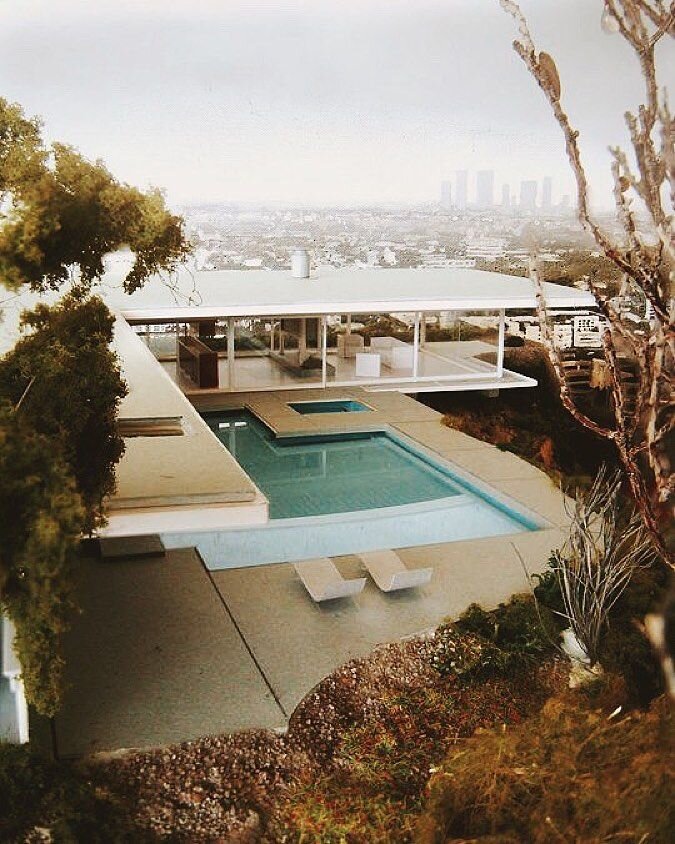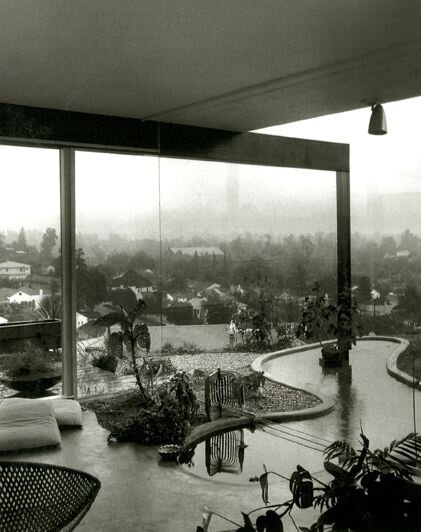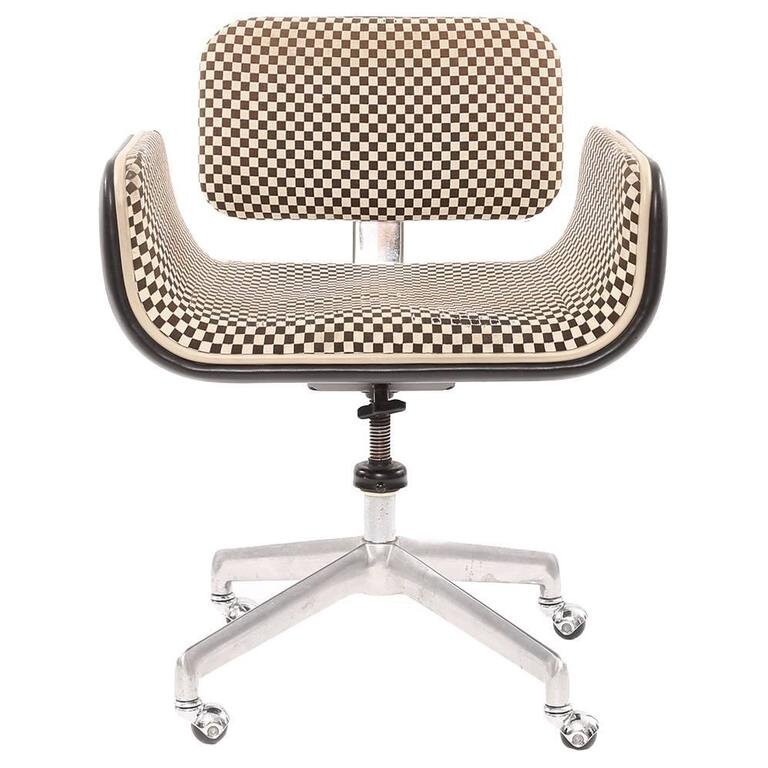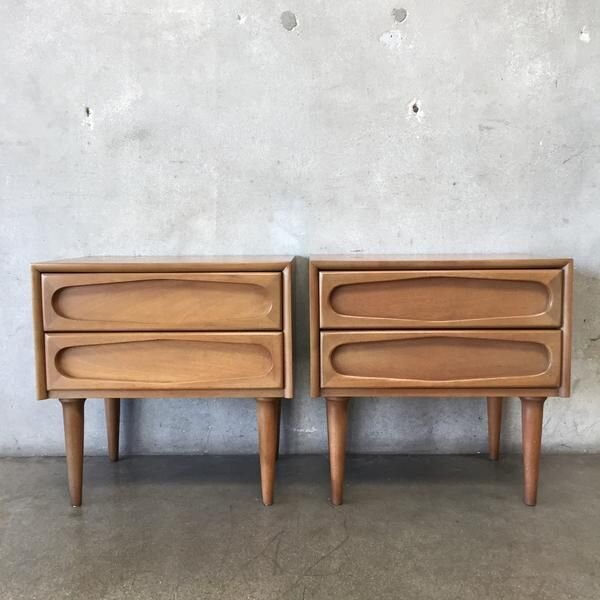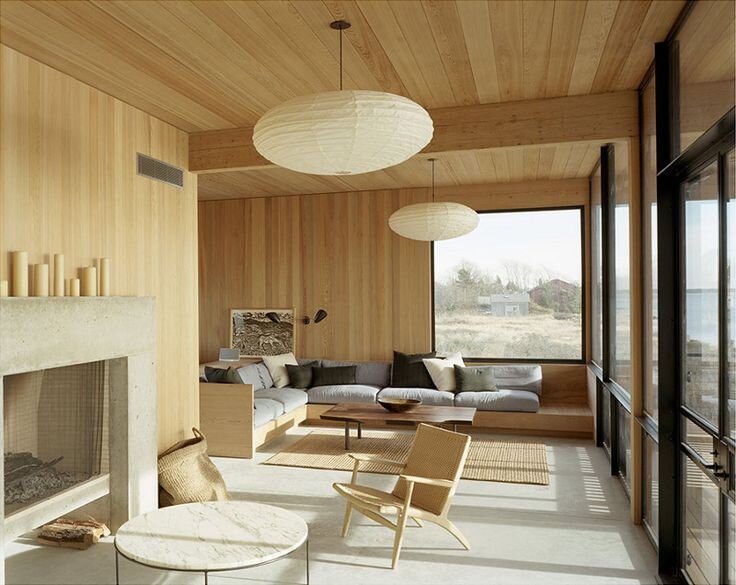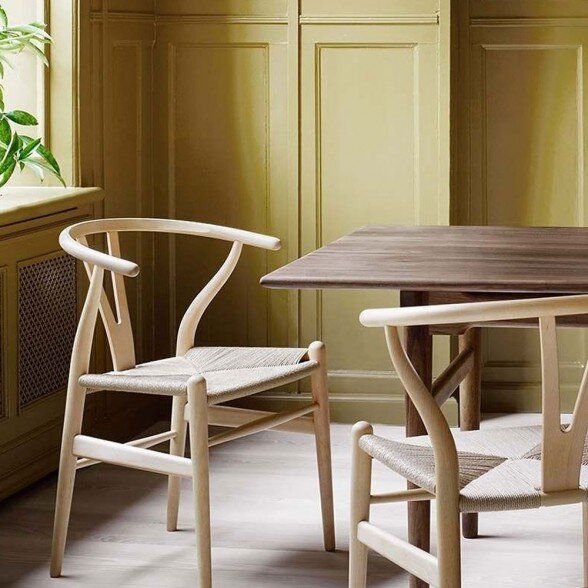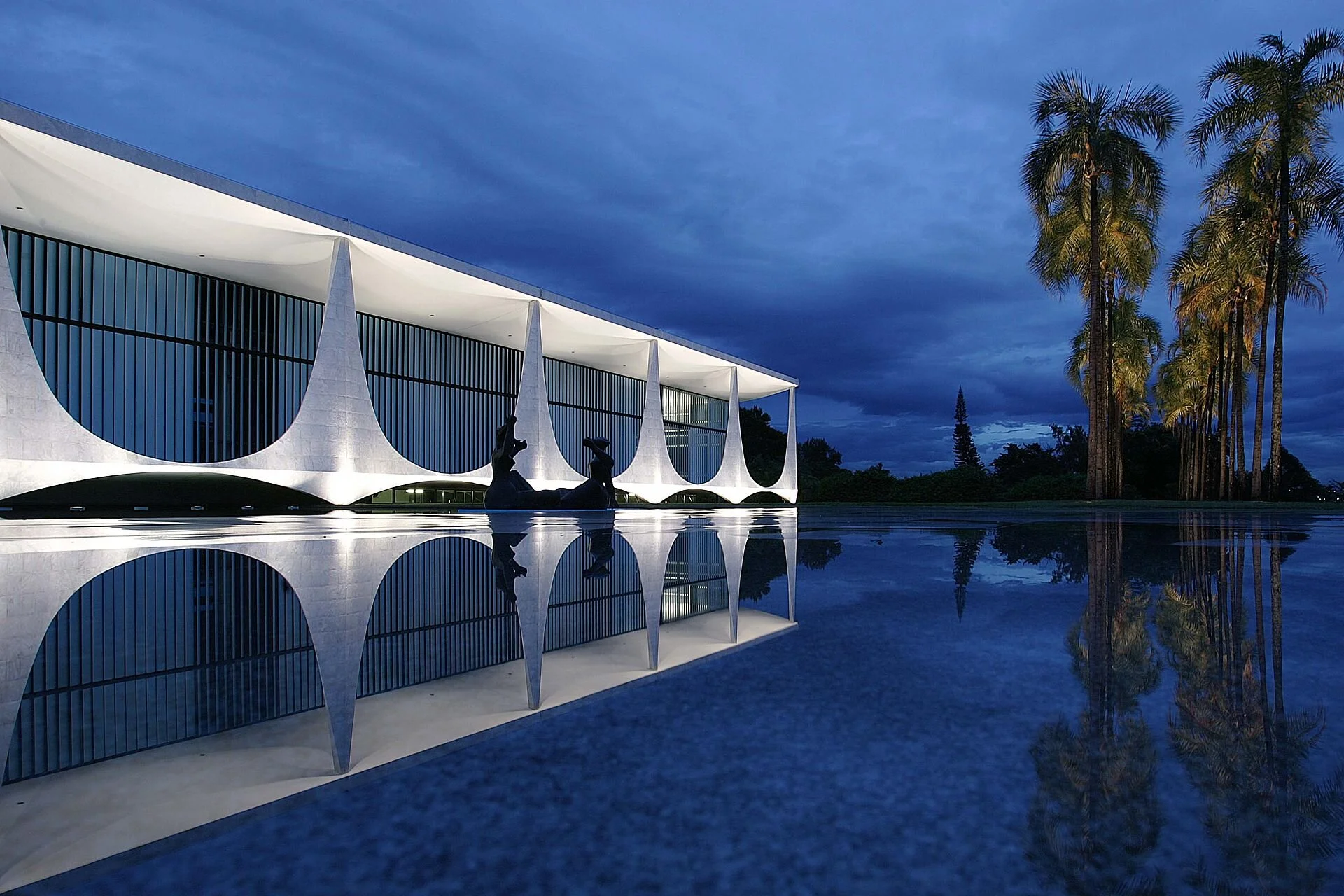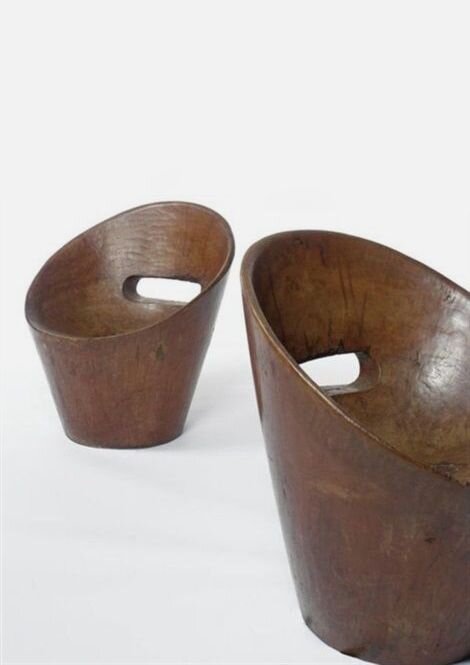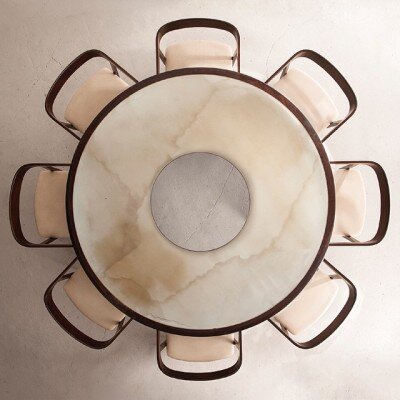Hello and Welcome to DOCENT - your guide to design intelligence, creative solutions and earthly beauty.
Today’s briefing is dedicated to the global design phenomenon that reshaped nearly every aspect of daily life. An aesthetic that stills rules our imaginations.
Mid-Century Modern
The term mid-century modern was first coined in 1984 by art historian Cara
Greenberg to describe the furniture design trend of the 1940’s – 1950’s that
championed functionality and simplicity. Good design always responds to
human need and MCM was largely born out of two socioeconomic factors – a
post WWII economic boom and a desire for more relaxed lifestyles.
All trends – from art and design to political – are a response to what came
before. After a period of war and economic hardship, the decorative nature of
Art Deco design felt inappropriate, even frivolous. The zeitgeist leaned toward
modern simplicity, functionality and a more casual approach to living.
While the mid-century movement was the organic offspring of modernism as
envisioned by the likes of the Bauhaus and Le Corbusier, it did manifest in
different ways in different regions. As someone who appreciates design
history and has an interest in provenance, I find it fascinating to study how
the movement took shape across the world specifically – in America,
Scandinavia and Brazil.
THE STAHL HOUSE, ARCHITECT PIERRE KOENIG, LOS ANGELES, CALIFORNIA 1960; THE CONSTANCE PERKINS HOUSE, ARCHITECT RICHARD NEUTRA, PASADENA, CALIFORNIA 1955
AMERICA
While today iconic MCM pieces are sold at high prices, important to recall the motivation of the movement was to bring good design to the masses. As soldiers returned home from WWII, thousands of track homes were built across the country to house them. These homes needed to be built quickly and cheaply, so architects relied on horizontal lines and clean open flow floor plans.
Did you know that the birthplace of the American mid-century modern movement was Michigan in the 1930’s? Yes, the design movement that reshaped virtually every aspect of American life was born in a suburb of Detroit on the lush campus of Cranbrook Academy of Art under the direction of Eilel Saarinen a 3rd generation Finnish architect. Saarinen directed Cranbrook as an experimental lab for his vision of fluid, humanist designs that were both modern and approachable. He adhered to the Bauhaus philosophy of gesamtkunstwerk which always sees an object within its larger context, and scales up to the next, and the next, and so on: “a chair in a room, a room in a house, a house in an environment, environment in a city plan.”
Under Saarinen, Cranbrook incubated many of the MCM’s most iconic pieces and birthed the careers of designers such as Charles & Ray Eames, Florence Knoll, Harry Bertoia, Alexander Girard, Alvar Aalto and his son Eero Saarinen.
From an interior design perspective, the furniture designs of this era were revolutionary in that pieces were no longer designed for a single purpose or room. Furniture was designed to serve multiple purposes, be easy to move and moderately priced. This was industrial design at its finest. Today, you can find mid-century modern pieces from IKEA to Crate & Barrel and DWR, but if you are looking for deep scholarship and rare finds Reform Gallery on Melrose is the place. Tell Gerard I sent you.
MILLER HOUSE, ARCHITECT EERO SAARINEN, COLUMBUS, INDIANA 1953; ALEXANDER GIRARD FOR HERMAN MILLER 1967; PAIR OF BEDSIDE TABLES, AMERICAN OF MARTINSVILLE
DANISH MODERN
Also inspired by the principles of Bauhaus modernism, Danish modern was launched in the 1920’s by furniture maker and architect Kaare Klint at the Royal Danish Academy of Art. Klint encouraged his students to abandon ornamentation in favor of form and consider the needs of daily modern life. He was also deeply committed to the warmth and beauty of traditional Danish cabinet making and forged creative partnerships with the Cabinetry Guild. This collaboration between architects and cabinetmakers is at the heart of Danish modern. The furniture and tableware from this period reflects the deep heritage of artisan craft in the region. Interesting to consider that industrialization did not come to Scandinavian until the 20th century, two centuries after it took root in Britain.
American retailers such as Sears and Woolworth saw the potential of Danish modern and started licensing designs in the 1950’s, adapting them to industrial production. After designer Finn Juhl created the interiors of the UN Headquarters in NYC, a more refined Danish modern aesthetic caught fire in the U.S. Scandinavian designers are often referred to as “soft modernists” due to their dedication to craft, the handmade and natural materials like wood and leather, which differentiate them from American modernists who enthusiastically embraced mechanical processes.
Materially, Danish modern designers worked with lightly colored woods like teak and oak. They used a 360-degree design methodology to ensure that the furniture looked good from every angle. Geometric and organic patterns are quite common given the movement’s emphasis on living in harmony with nature. My favorite feature of Danish modern furniture is the feminine rounded edges. I find curvaceous furniture soothes a space and makes it easier to move around. Scandinavian furniture designs tend to be lighter and more airy than American MCM, which make them a good fit for homes in Los Angeles.
While pieces from icons such as Hans Wegner, Finn Juhl and Arne Jacobsen are all the rage; I encourage clients to invest in lesser-known designers to cultivate originality in their MCM mix. In L.A., I recommend shopping at Danish Modern LA or keeping an eye on limited production pieces from Dana John.
RESIDENCE, ARCHITECT ARNE JACOBSEN, COPENHAGEN, DENMARK 1950; CARL HANSEN CH24 & CH25; HANS J. WEGNER HOME, TINGLEVVEJ, DENMARK
BRAZILIAN MODERNISM
The world has been slow to recognize the artisanal and sensual style of Brazilian modernism and I am grateful for the dedication of the founders of
R & Company for helping to educate the design community of this rich heritage. They literally flew to remote villages in Brazil to track down long forgotten artisans! Brazilian modernism was not only a design movement, but also a cultural campaign of forging a new “post-colonial” identity and instilling a new social consciousness starting as early as the 1920’s. It was both an aesthetic and cultural revolution with the goal of infusing a global movement with Brasilidade, or Brazilianness. “Life in a hammock. Life as a hammock” was the guiding ethos.
The iconic works of Brazilian modernism by Oscar Niemeyer, José Zanine Caldas, Sérgio Rodrigues, Bo Bardi, and Joaquim Tenreiro call to mind utopian ideals, feminine curves and a pride in local cultural history. Uniting the aesthetics of Bauhaus with indigenous Brazilian materials and artisanship, the furniture is known for more generous proportions, low profiles, strong lines and richly colored tropical woods. Designers embraced and highlighted the grains of Brazilian rosewood and often used leather and woven fibers as a reference to the country’s rain forests and fishermen.
While the giants of Brazilian modern are not yet household names, their luscious take on Mid-Century Modern offers much for clients looking for a fresh twist. Highly recommend R & Company. in NYC and Thomas Hayes in L.A. as resources for Brazilian modern.
PALACE OF THE DAWN, ARCHITECT OSCAR NIEMEYER, BRASILIA, BRAZIL 1958; JOAQUIM TENREIRO, DINING SET 1954; JOSE ZANINE CALDAS, PAIR OF PEQUWOOD CHAIRS 1970; CASA DE VIDRO IN MORUMBI, ARCHITECT LINA BO BARDI, SAO PAULO, BRAZIL 1950
How is it that mid-century modern designs have been so resilient over the years? Can you think of someone that is NOT craving more simplicity and ease? The designs feel like a bridge between the past and the future. An aesthetic that keeps us in the present.
Until Next time -
